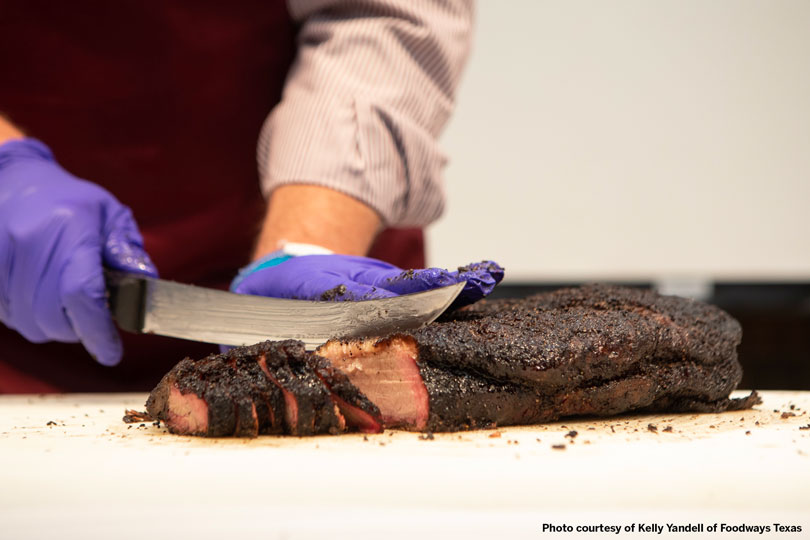By Justin Walker
Communications Specialist
Demand for brisket continues to rise, but prices are reaching all-time highs, Dr. David Anderson, Texas A&M AgriLife Extension Service livestock economist, said.
“These prices have really skyrocketed, and this is a demand-driven phenomenon,” he said. “What used to be a very inexpensive cut, the primal brisket, is now only behind the primal rib and loin in value.”
At the end of May, the comprehensive cutout brisket was valued at $213.47 per hundredweight, a 19.4 percent increase from May 2018, Anderson said. In fact, prices jumped almost $20 per hundredweight from the first to the last week of May 2019.
Barbecue has grown in popularity nationwide. For those trying to replicate Texas-style barbecue, brisket is commonly included. It’s not just at restaurants and craft barbecue joints either, Anderson said. Barbecuing at home is more common than before, sparking an increase of brisket and other meats being carried in grocery stores.
Because higher-end cuts are being used more at home, prices are shooting up higher than ever, Anderson said. Even large chains have started serving brisket.
“We have growing supplies of beef overall, but our growth in the cow herd is really slowing because cattle and calf prices have fallen as our supplies have grown,” Anderson said. “While we have some of the largest cow herds since 2009, the rate of growth is slowing. We need those cattle and calf prices to support a growing herd.”
Texas barbecue is often depicted by the “Texas Trinity”—brisket, pork spare ribs and sausage–Dr. Jeff Savell, distinguished professor and E.M. “Manny” Rosenthal Chair at Texas A&M, said. Brisket, Savell said, is the backbone of Texas barbecue.
“If you can’t do brisket, then nobody is going to come see you,” he said. “If you think about the top-ranked barbecue restaurants in the state, they all do brisket wonderfully. It is just part of the game.”
Click here for more information on brisket and advancements in barbecue.

